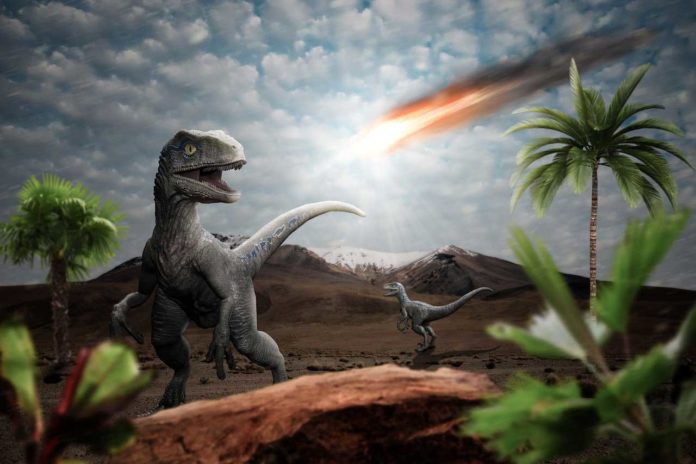About 66 million years ago, a massive celestial object struck the planet and killed the dinosaurs. The impact that formed the Chicxulub crater had a profound and catastrophic effect on Earth’s environment.
However, the origin of the Chicxulub impactor is an unsolved puzzle. Whether it was a comet or an asteroid remains unknown.
A team of Harvard scientists resolved this puzzle- reporting the nature and origin of Chicxulub impactor.
Scientists suggest that a comet might have killed off the dinosaurs instead of an asteroid. Using statistical analysis and gravitational simulations, scientists found that a significant fraction of a type of comet originating from the Oort cloud, a sphere of debris at the edge of the solar system, was bumped off-course by Jupiter’s gravitational field during its orbit and sent close to the sun, whose tidal force broke apart pieces of the rock. That increases the rate of comets like Chicxulub (pronounced Chicks-uh-lub) because these fragments cross the Earth’s orbit and hit the planet once every 250 to 730 million years or so.
Amir Siraj ’21, an astrophysics concentrator, said, “Basically, Jupiter acts as a kind of pinball machine. Jupiter kicks these incoming long-period comets into orbits that bring them very close to the sun.”
“It’s because of this that long-period comets, which take more than 200 years to orbit the sun, are called sun grazers.”
“When you have these sun grazers, it’s not so much the melting that goes on, which is a pretty small fraction relative to the total mass, but the comet is so close to the sun that the part that’s closer to the sun feels a stronger gravitational pull than the part that is farther from the sun, causing a tidal force. You get what’s called a tidal disruption event, and so these large comets that come close to the sun break up into smaller comets. And, on their way out, there’s a statistical chance that these smaller comets hit the Earth.”
Their calculations also increase the chances of long-period comets impacting Earth by a factor of about ten and show that about 20 percent of long-period comets become sungrazers.
Loeb said, “Our paper provides a basis for explaining the occurrence of this event. We are suggesting that if you break up an object as it comes close to the sun, it could give rise to the appropriate event rate and also the kind of impact that killed the dinosaurs.”
“Our hypothesis predicts that other Chicxulub-size craters on Earth are more likely to correspond to an impactor with a primitive (carbonaceous chondrite) composition than expected from the conventional main-belt asteroids.”
“This is important because a popular theory on the origin of Chicxulub claims the impactor is a fragment of a much larger asteroid that came from the main belt, which is an asteroid population between the orbit of Jupiter and Mars. Only about a tenth of all main-belt asteroids have a composition of carbonaceous chondrite, while it’s assumed most long-period comets have it. Evidence found at the Chicxulub crater and other similar craters that suggests they had carbonaceous chondrite.”
They noted that “composition evidence supports their model and that the years the objects hit support both their calculations on impact rates of Chicxulub-sized tidally disrupted comets and for smaller ones like the impactor that made the Zhamanshin crater. If produced the same way, they say those would strike Earth once every 250,000 to 730,000 years.”
Journal Reference:
- Siraj, A., Loeb, A. Breakup of a long-period comet as the origin of the dinosaur extinction. Sci Rep 11, 3803 (2021). DOI: 10.1038/s41598-021-82320-2
